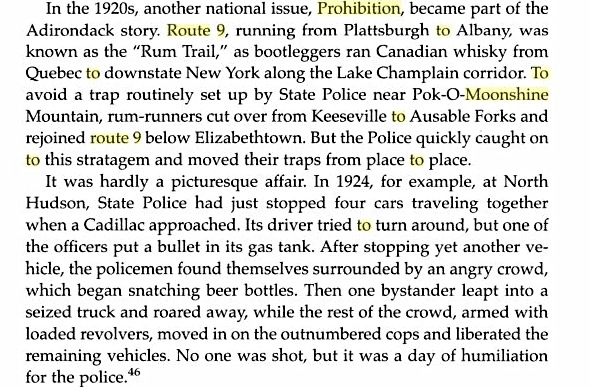Schroon Laker: Who is on which?
Patrick: We both got hired in both which is kind of extreme.
Schroon Laker: So fate stepped in there. You're right.
Patrick: Exactly. It would be one thing. We meet a lot of actors that you like in one show and then you like see them, like a couple of years later you run into them again. It's a small world. But to just without referring each other for the jobs or anything to both be hired for both shows concurrently was very strange and we ended carpooling and got to know each other that way.
Then once you know actors, then you start recommending people. You hear about an opening here and you say, "I know somebody that could do that job." And so forth, you work together more. But Tara was getting too, so we're sort of you go around wherever the job takes you.
Even when we were doing great work, there was always something about it that felt like it was being held back. So even when you have a really good experience, you run up against something somewhere in the process where you say, "Oh, but if we just couldn't ... If we could get pass to that thing. If we didn't have to deal with this thing."
Usually, what we found out, the generic complaint that we could apply broadly was that with very talented actors, very talented directors, very talented storytellers, we're all making the same mistake which is that they're trying to do these classic works; usually Shakespeare that was our specialty, but really just about anything. We are talking about that is in the classical vein, so it gets done regularly over time by different people.
There's this pressure that people feel to put their spin on it. Which is to say, "It's not enough ... The world has seen Hamlet, so what is my Hamlet look like?" Then once the placement around for 400 years and it gets done a lot, the ways that you can put your spin on it get more and more outlandish.
You have Hamlet in Nazi Germany, Hamlet in the Old West, Hamlet in space, you get these crazy concepts. I picked three concepts none of which I have seen applied to Hamlet but all of which I've seen applied to something by Shakespeare.
I don't want to point fingers because I know a lot of great people doing great work even with concepts, but what we saw as the general rule was that these concepts ultimately takeover the conversation and you end up having to mess with the play in order to fit it into your concept.
Now you're making cuts, sometimes you're adding language in, you're changing things, the character relationships and behaviors in order to serve your concept when you have works by the greatest dramatist certainly in English of all time.
Even as a practitioner of the work over and over and over again, you never feel like you've had a clean trip through the play to just know what is the play. I know what this concept of the play is but I still don't feel connected to the play itself.
We just wanted to see what would happen if we freed the place from concepts completely. That end pragmatic need to streamline resources ...
Schroon Laker: And budgets?
Patrick: Exactly. Got us to a minimalist take on all of these things. If you know Aristotle at all. Aristotle lists the aspects of theater. There are six, the most important to the first two ... He ranks them in order, but the most important to our plot and character, Aristotle emerges from the plot, what is a character or the character is what the character does.
That's how you know that Hamlet is indecisive. That's a fair assertion to make about Hamlet but you know that because of the fact that he won't kill the murder until he has more proof. You know this because of the things that occur in the plot.
The last thing that Aristotle ranks on the elements of drama is spectacle.
Schroon Laker: Really? The least thing, the least important?
Patrick: The least important thing. If you ever catch ... If I ever catch somebody that leaves in Adirondack Shakespeare Company Production and someone asked them how they liked it and they say, "The costumes were beautiful. I will know that that show was a failure." Because the costumes were beautiful is a critique that you want to make of a gallery exhibition whose purpose is the spectacle.
Theater drama is not about that. The spectacle is incidental to the things that are happening on the stage whose principal purpose should be to move you. I have a huge productions, major productions get bogged down in spectacle so that ...
Schroon Laker: Lighting, costuming, props, whatever.
Patrick: Yeah. Some shows are simply spectacular. The Follies for example are just that type of show. Aristotle would not write a good review of anybody's Follies no matter how good they were from a dramatic perspective. You would say, "Yes it was fun and it was diverting but it did not have a moving effect on me, a profound effect on me as a human being."
Schroon Laker: So fast forward, how many productions has ADK Shakes done at Scaroon Manor over the years now?
Patrick: In 2009, we got our permit to get in there, too late to mount a main stage show. We had to do a variety hour of scenes and songs and so forth. But I'll count that as one. In 2010, we couldn't get in there because they at first did not budget money to open it for the season.
They changed their mind about that in June just before the July 4th holiday and they opened for July. But too late for us to get in there, so we had our first summer season in the Schroon Lake Park and the Boat House, the band stand.
We had one in there in 2009 and 2011 Midsummer Night's Dream, Merchant of Venice, Complete Works Abridged and a children show, a [few 00:32:43] season of Minotaur. 2012, Hercules, Hamlet, Twelfth Night, Rosencrantz & Guildenstern Are Dead, and then last year, Celtic fairy tales. That's ten full productions and we'll have another six this summer.
Schroon Laker: If by chance you came across millions of dollars, can you go to New York State and say, "We'd like to bring Scaroon Manor back to its former glory with your permission and your architects and archaeologists
Patrick: I need to have a conversation with Gary West at DEC Region 5 about exactly how that works, but what I know from the stewardship agreement without getting too far into detail is as long as we worked with their approval and were doing a restoration in the vein of the original architecture, then we could put that thing right back to how it was when Jane Kelly and Natalie were in there for Marjorie Morningstar.
The first step is seats. It would be great to get seats in there. It would be great to get lights in. We just want some basic stuff to basically get enough light for us to be in there after the sun goes down. Because as it is, we're limited to the full run of a play. We have to work back from sun down.
Schroon Laker: You got to be out before it gets dark?
Patrick: Yup.
















